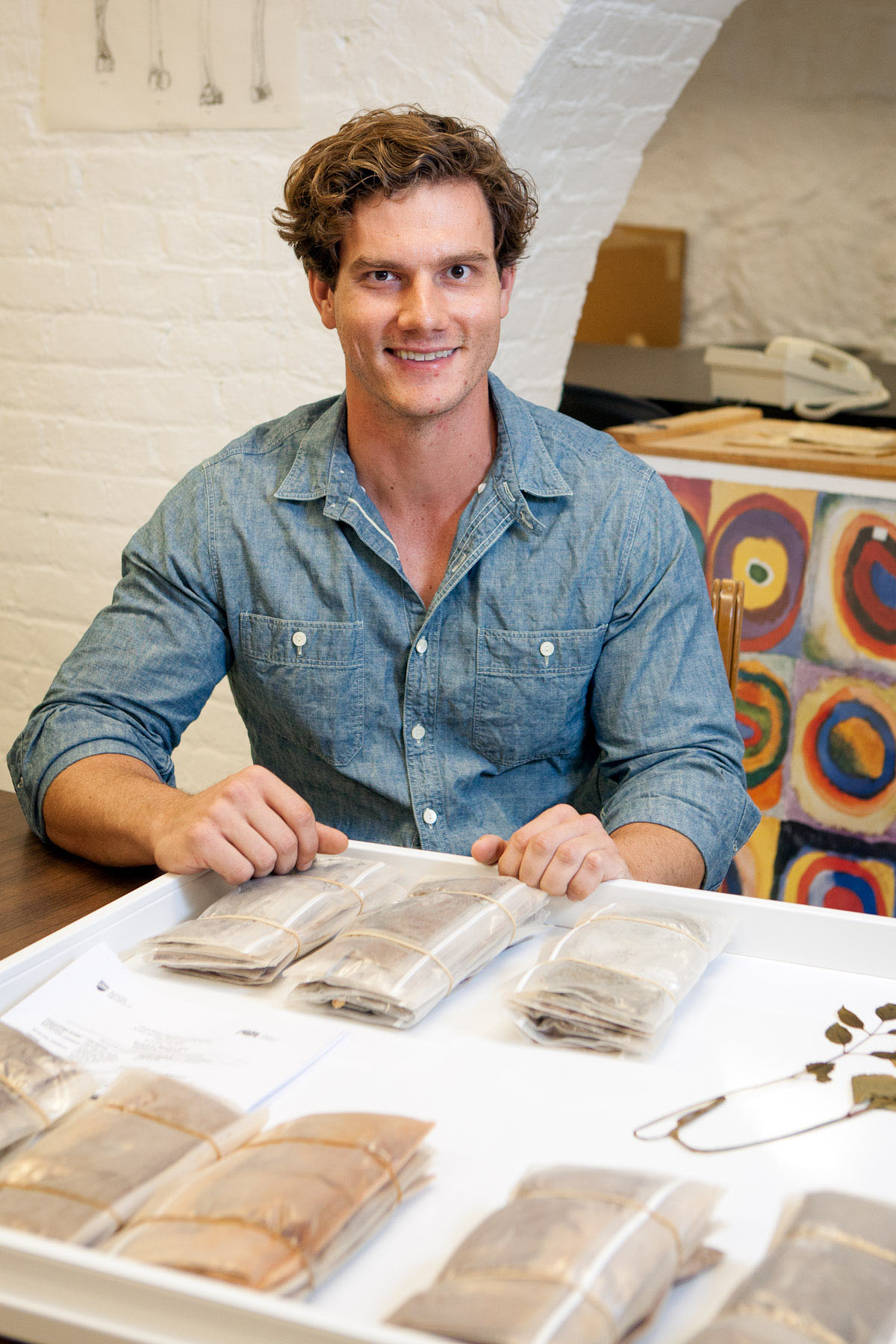Archaeology doesn't just live behind glass in museums. Case in point: the research of University of Virginia anthropology lecturer Jack Stoetzel and his summer-school course, "Archaeology of Human Habitat," in which he emphasizes the notion that "we imprint our habitats with our culture" – not just in the past, but every day.
Stoetzel and his students are "looking for ways we have manufactured environments we have occupied" and thus "what it means for ourselves and future selves," since there is a cyclical relationship in the way that "we change something and the act of changing brings about new changes we respond to," said Stoetzel, a Ph.D. candidate in the Graduate School of Arts & Sciences.
As an example, Stoetzel said, "If a group of people decided to clear a forest in order to expand agricultural production, subsequent generations no longer have the option to draw from that forest to meet fuel needs. So those following generations must choose other avenues to meet fuel requirements."
The focus of Stoetzel's class is similar to that of his research, which often picks up where traditional, artifact-based archaeologists leave off. To this end, he spent his most recent research foray on the Tanzanian coast with the aim "to reconstruct the relationship between Swahili people and coastal ecosystems between AD 600 and 1600" by looking not just for artifacts, but "ecofacts," which are illuminating "signals and cues" found in plant and animal remains as well as soil changes and other forms of ecological evidence.
Charcoal remnants found by Stoetzel in former lime production and hearth pits are prime examples of such "ecofacts," which, in turn, can be analyzed to determine what plants inhabitants chose to use as fuel.
As a result, this discipline is not only directed toward studying the remains of human products, but also toward changes in forest and plant structures stemming from human behavior. Such an outlook can reveal much about cultures in a given area by indicating how inhabitants used their natural resources and for what purpose, be it structure-building, fuel or food.
Animal and plant remnants, for instance, may offer valuable clues regarding both a culture's diet and past seasonal changes by analyzing growth rings in trees, clams and certain bones. Soil can also provide a picture of prior ecosystem activity through signs of degradation, flooding and other natural events.
Given this focus on "paleoethnobotany," Stotetzel's work on the east coast of Africa focuses mainly on excavating and examining "phytoliths," or microscopic plant remains. With samples now in hand, he is beginning to analyze them using the laboratory resources of both the anthropology and chemistry departments at U.Va.
In addition to this summer course, Stoetzel will teach a similar class in the fall on "Environmental Archaeology." While most students enrolling in these classes are anthropology majors, Stoetzel notes that other majors, including environmental sciences and biology, are also participating. Their interest may be a result of the wide and currently relevant nature of this particular outlook on archaeology that allows for the "application of a long-term perspective of human environmental interaction to current choices," Stoetzel said. As a result, he foresees that those equipped with this perspective will be involved in more than just archaeological excavation and cataloging, but will also be active in environmental policy roles and think tanks.
Such a broad view is emphasized by Stoetzel's research goal of using "paleoethnobotanical methodologies" to "create an ecological understanding of the motivations for, and ramifications of, such Swahili social transformations." Furthermore, he hopes that this "environmental reconstruction will insert East Africa into the dialog of coastal resource management strategies, which is informing environmental legislation across the globe."
Stoetzel said he pursues a holistic approach that uses social science to "bridge the gap with physical science" and thus account for the infinite variety of cultural perspectives in the attempt to "see nature's reaction to human decisions." As a result, both he and his students face the notion of a "bricolage," or collection of important elements that form a complete habitat, as developed by the renowned French anthropologist Claude Levi-Strauss, whose book, "The Savage Mind," is featured in the course. From this vantage point, they can "use signs of the past, present and future to act and solve problems at hand."
— By Preston Pezzaro
Media Contact
Article Information
June 26, 2012
/content/uva-class-looks-nature-reveal-our-past-and-future

